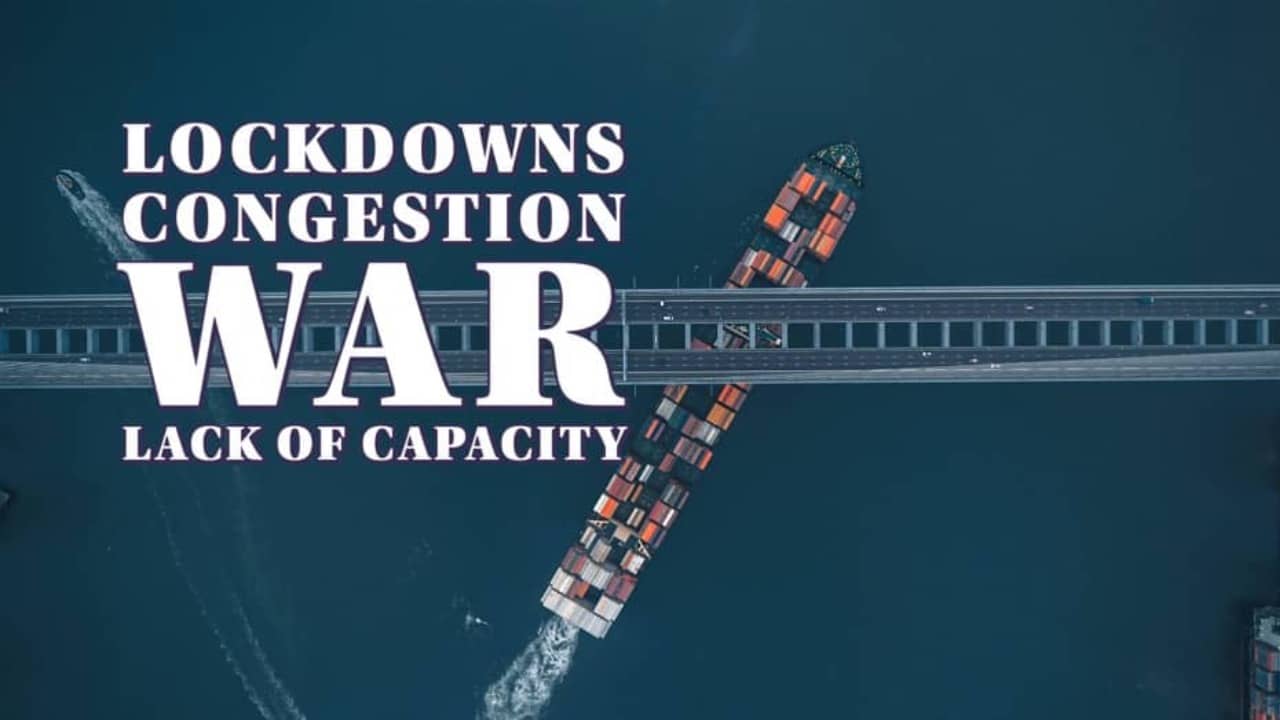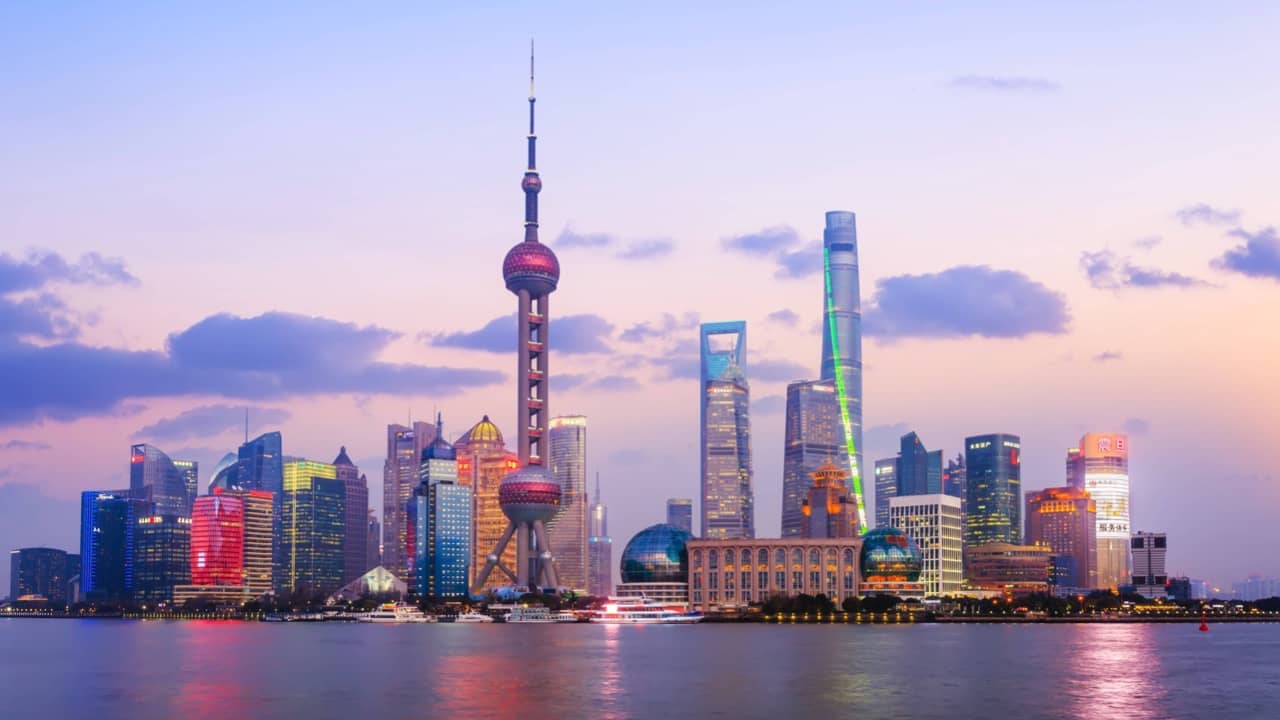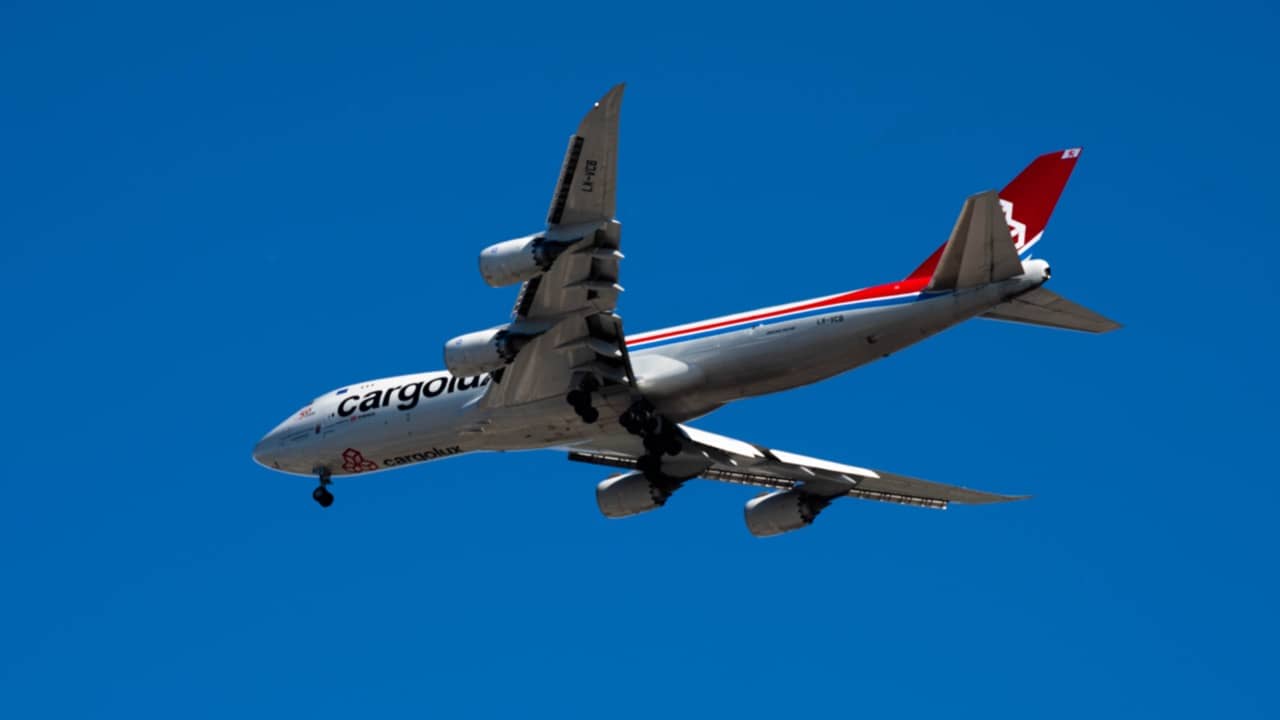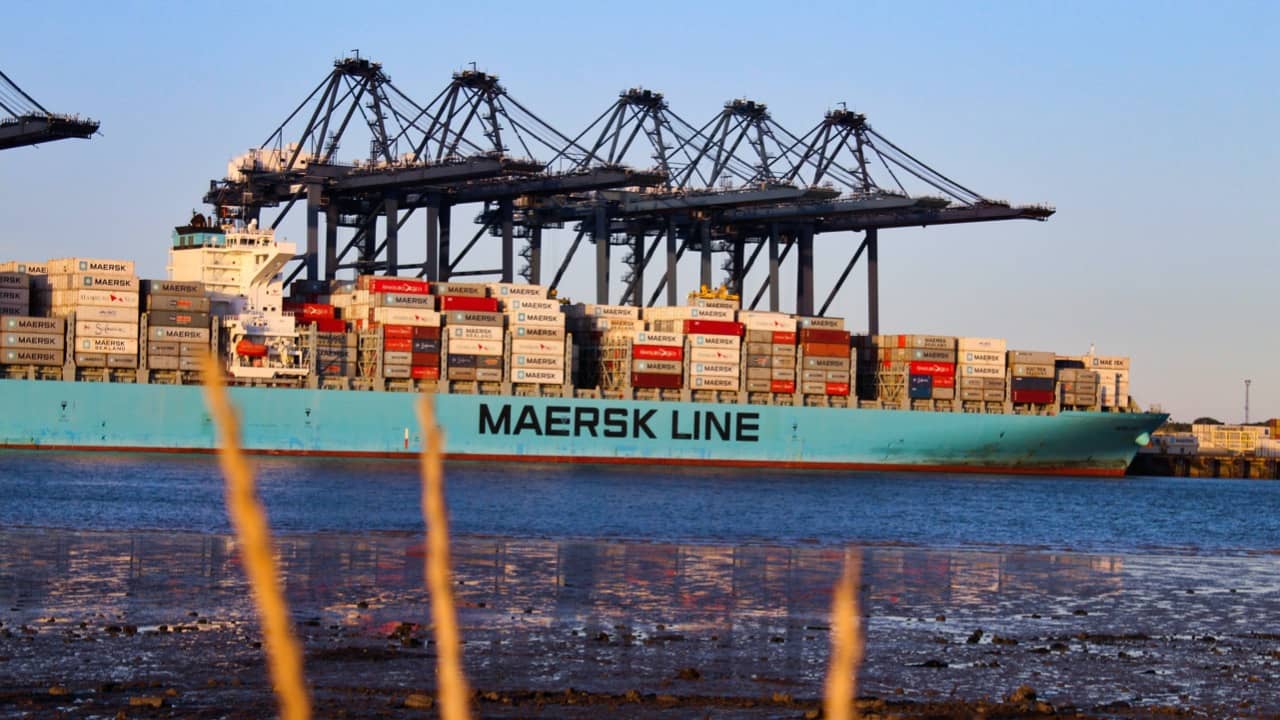
Do Not Put All Your Freight Eggs in One Basket
13-minute read (45-minute listen)
Lockdowns, ports congestion, war, lack of slots and flights – you name it, the supply chain has seen it all.
In this podcast of the Loadstar, a news resource for the global logistics industry, Mike King looks at the implications of more Covid-19 lockdowns in China, the latest on air and shipping capacity and prices, port congestion challenges, and what war in Europe is doing to air cargo markets.
Listen to the full podcast here or read the best parts below
Mike King: The big story in Asia right now is China’s very strict Covid lockdown policies that continue to impact global container and airfreight markets. Let me welcome Peter Sand, the chief analyst at Xeneta.
Peter, before we look at rates, let’s look at these lockdowns in China and how they have affected shipping these past months. And when I say shipping, we are not just talking about that port-ship interface, where we already have a lot of congestion in some of those Chinese ports.
I’m talking about the wider logistics network, the trucking, different internal borders that are making things very difficult to organise, and how this affects the ability of manufacturers to keep up with production schedules. So, now these lockdowns are really having a detrimental impact on economic growth.
In late March, this got a step worse with this two-stage lockdown of Shanghai, the largest container hub in the world. How are you reading this plays out for our industry and global trade flows?
Peter: On the heels of the lockdown in Shenzhen, this is, of course, another curveball being thrown at global supply chain logistics.
I must also say that the Chinese authorities, even though they always claim that port terminals are operating normally, which is useless information when the manufacturing facilities are closed down — the issue with truckers and end-to-end logistics that’s a worry here.
We expect longer delays and more congestion. We see rapid rising congestion also because Shanghai is just so essential for the world of the global container business. Shenzhen is huge, but Shanghai is epic.
Intra Asia has seen more disruption than perhaps meets the eye in terms of the slowdown in exports out of the wider Asian region. These lockdowns come when Asian exports are coming down, and you also see that, of course, in spot rates that have been trending down for quite a few weeks now.

Mike King: Just looking at how that might have a domino effect on those global shipping patterns.
If we have a lockdown now in Shanghai, let’s assume there isn’t another series of lockdowns in the next few months and this lockdown in Shanghai lasts until mid-April. What does that two-week “break” in exporting volume mean for the trans-Pacific or the Asia Europe trades? And then, is there a knock-on effect for the peak season?
Peter: If we jump to the opposite side of the Pacific, I think the ports of Los Angeles and Long Beach are making the most of this weakness. They’re running down the long list of ships waiting in line to call the port. They are actually improving on the productivity in that massively congested area that has been the centre of a lot of attention over the past year and a half.
The most important thing is that they keep up the turnaround, the throughput of the boxes to prepare not only for the upcoming labour union discussions but also for the peak season coming around very soon.
Lines, forwarders, and shippers face another round of issues with the lockdown in Shanghai right now. As you suggest, we see cargo being diverted down to Ningbo, which will also plug up if this extends into mid-April.
So fingers crossed it will not do that, but I know from history that we may only see a couple of weeks of specific lockdowns, but the knock-on effects are felt for months ahead in terms of end-to-end logistics.
So these disruptions are the essence of what has driven up the markets in recent years. We just see one obstacle being removed and two new added – that’s not going in the right way.
Mike King: You mentioned that we’ve seen a reduction in port congestion on U.S. West Coast. How has all this been playing out in terms of spot rates in the Trans-Pacific and Asia Europe? They’re weakening a bit, yeah?
Peter: I think that’s been the talk for quite a few weeks now. We still see a strengthening of contract rates as more shippers and lines seek to lock in volumes with big key priority shippers, but will they deliver the resilience that they all seek? I think the jury is still out on that.
We have still much to see in terms of improvement of schedules, but the easing of spot rates is likely to extend for the coming weeks, and perhaps even to a larger extent than what we have seen in the most recent weeks with a gradual drop but time will tell as we move into early April.
The anecdotal evidence tells us that tables have turned on some key trade lanes where lines have requested the forwarders for more boxes to be shipped. So maybe we are at somewhat a turning point in the whole story regardless of the many different obstacles that we constantly see, most of them are COVID related, but in terms of demand, we may be at a turning point right now.
Mike King: You mentioned earlier that lines are turning back to forwarders and looking for cargoes to fill their vessels. This is a very interesting development when we’ve been in the trend of lines moving towards their bigger shippers or the BCOs directly.
Later in this podcast, we will hear from a forwarder struggling to find space with carriers on certain trade lanes. Do you have any advice for people in that particular boat?
Peter: Every shipper needs to look at their own freight procurement strategies, and they need to find a way to position themselves as the shipper of choice for the carriers. To be a significant counterparty to the lines, they need to be selective and fully understand their freight requirements. That’s where you pitch and make yourself heard with the carriers.
If you’re just moving a few boxes, carriers are more than happy to have you on digital spot market platforms and take your money. But if you can position yourself as a key player, you may end up with the other hand in the negotiations.
Mike King: We’ve heard how these lockdowns are hurting trade flows, but it’s not 100% clear how this is impacting each port necessarily. Mike Wackett, [The Loadstar’s sea freight correspondent], do you see lockdowns in China remaining a key disruptor in the months ahead unless there’s a policy change?
Mike Wackett: Absolutely, I think they may have to review this zero-tolerance policy at some stage because what we’re seeing is lockdowns are extending indefinitely. What I heard yesterday – it was a total mess. The ports are still working, but if the warehouses are not open and there’s no trucking, the terminals might as well be shut.
We heard yesterday that 2M [Maersk and MSC alliance] were blanking one of its loops, and we expect some of the other two alliances to do something similar because even though rates are still very high for the cargo they have, they will be less inclined to sail the ships half empty.

Mike King: In China, we’ve also got disruptions at airports due to some things you mentioned. It’s not just about the airports themselves functioning or the carriers impacted by some of these restrictions on their personnel; it’s also about trucking companies getting cargo to the airport. This puts downward pressure on international air freight prices, somewhat offset by higher fuel costs and new fuel surcharges.
Let’s look at air markets by how charter operators have been faring through all of this. This ties in with the invasion of Ukraine, which has changed the shape of this particular sector due to the loss of much capacity as a result of this.
I would like to welcome Glenn Hogben, the CEO of the Air Charter Association.
We’ve had two years of a pandemic that has nuded the air cargo industry of capacity, and we’ve had all of these different companies: retailers, container lines, forwarders – all trying to get hold of the air cargo capacity of any sort. This has all been great for your members, certainly in terms of rates?
Glenn: Yes, the last two years have significantly changed the air charter landscape. It’s really rejuvenated the air cargo industry.
It’s fair to say the industry was having quite a tough time before the pandemic. Rates were squeezed down to the minimum, trying to compete with other more economical methods of transport. But the pandemic allowed the industry to demonstrate its flexibility and adaptability to meet a huge increase in demand.
Most importantly, the key advantage of the speed of delivery is its overriding factor.
It’s been amazing to see the creativity and motivation to increase capacity around the whole industry in an effort to support various humanitarian, PPE, medical, and urgent cargo deliveries. And it’s definitely had a positive knock-on effect on charter rates, and anytime demand outstretches supply, that is an inevitable impact.
I would probably estimate that rates could have been up to 30 to 40% higher than in 2019. However, it’s important to note that that’s not all converted into profits, as operators’ costs have also increased significantly.
We’ve had rising fuel prices, additional crew requirements managing the various challenging travel requirements, and restrictions that have required additional resources to be focused on. So costs have gone up, so there is a bit of a balance. However, overall it’s been a very positive time for the cargo sector of the industry.
Mike King: Can we just zoom in on the disruptions we are seeing in the air freight market right now? At Chinese airports, particularly Hong Kong, we’ve had various COVID regulations that have affected crews and the airport operations for these two years. Everyone’s been after capacity, which has drained that capacity.
At the moment, we’ve also got this terrible war in Ukraine and the restrictions of airspace. We’ve got rail and ocean cargo shifting to air because it cannot go from Asia to Europe at the moment on those rail services via Russia. How has this affected demand for your member services or charter operators?
Glenn: The market was already under capacity pressure due to the supply chain issues that the pandemic has exasperated. Now the capacity is reduced due to various sanctions and airspace restrictions over Europe.
Flight distances, flight times and fuel costs all increased, which will cause more cost increases as airlines have rerouted their flights between Asia and Europe to avoid Russian airspace.
For some operators, longer routes can be extended by three to four hours of flight which is a huge increase in cost. Some carriers have even cancelled those routes from Asia to Europe as they face longer and costlier routes. Those carriers that continue to fly will pass on the higher fuel costs, and the weight of that additional fuel will limit the amount of cargo they can carry.

Mike King: As you mentioned, Glenn, there are a lot of moving parts in this market at the moment, and there’s very little visibility about what lies ahead.
So this is a very broad question of what, in your view, would need to happen for air freight markets to go back to something like late 2019 state, or is this not necessarily desirable for people who’ve got charter capacity.
Glenn: Well, that’s an interesting question, and I’m not sure it will happen in the near future. There are so many factors that continue to impact the world that the need for fast and efficient cargo transport is almost certainly going to continue.
We hope the peace returns to Europe and the pandemic continues to be suppressed, so the restrictions are removed.
Ultimately the air charter industry is cyclical, and, personally, I don’t think this is any different. We’ve seen a much sharper change due to the global level of the recent demand drivers. As other forms of transport stabilise, some demand will reduce. I hope pricing will fall back in line accordingly.
The air charter remains an attractive option for fast, efficient deliveries, which is important for the industry. It’s almost impossible to predict what might happen.
Mike King: As Glenn pointed out, there is not much scope for getting the air cargo market back to pre-Covid levels. Well, certainly not right now. But this is also true on the ocean. These unsustained higher costs, scheduling reliability and simple inability to find space are not going away.
Mike Wackett: You’re right, and I take my hat off to some of these smaller forwarders and NVOCCs that have to navigate the market for the past 18 months or so. But by and large many of their customers have stayed quite loyal and know that they’re fighting even harder for them.
I think that some shippers that have been poached by carriers now regret losing that entrepreneurial quality of a forwarder.
Mike King: That’s a good point, Mike, and I think it’s probably a great point to bring in Chris Higgins, commercial director at AFS Global, a U.K. based forwarder.
Chris, we’ve highlighted that smaller forwarders and their customers are being squeezed out on some ocean trades as carriers have started focusing more on selling to direct shippers or concentrating on their largest BCO customers. Can you tell me how this has been affecting your business?
Chris: As freight forwarders, we’ve really felt the effects of these changing carrier strategies, focusing directly on the importer themselves or valuing the volume-based importers. Pre pandemic space available for forwarders and smaller importers has changed.
We supported three of the four major carriers for the last 15 years and found that there’s been no loyalty reciprocated back from those carriers in the change of the strategies. We’ve seen allocations that we had previously reduced or even removed.
Our largest VIP customers felt the biggest impact, who supported Maersk throughout 2021 and committed all of their volumes to Maersk.
Although Maersk had publicised its desire to implement this strategy and go direct, when that changed, the impact on the cargo of forwarders and importers using the Maersk service meant a lot more cargo was back in the market for other carriers.
One of the carriers told us, for example, that they had phone calls with importers that they’ve been chasing for years and never had the opportunity to support.
And now, with this abundance of cargo in the market, the remaining carriers can be more selective about which commodities or trade routes they take. Therefore, there are fewer options for the smaller but still solid size volume importers to be able to pick.

So I think it was the overall impact not just from the Maersk move, but the appetite for the carriers to then decide what they wanted to carry and therefore leaving companies like us and our customers with reduced options.
There’s also a huge element of the rates being particularly high. So one carrier in particular also chose not to offer long term contract allocation because the spot market was so high.
Basically, a yield-based strategy means that there is no loyalty. And this is probably our biggest challenge. We’ve been loyal to the carriers for a long time, riding through previous challenges with them. And when we needed them most, we found that there were other factors they considered first rather than that loyalty.
Mike King: Presumably, that means you won’t be loyal in the future or forwarders like yourself will have no incentive to be loyal when you’ve been treated poorly in this high rate environment.
As with any market, eventually, these rates will decline so that the boot will be on the other foot at some point. Is that something that carriers or their representatives aren’t taking into account or thinking far enough forward?
Chris: I think it’s a really interesting point around loyalty. When this all calms down, and believe me, we’re all looking for the new normalisation from an end customer, importer, forwarder point of view.
So when it all calms down and we can understand what the future market looks like, we will still be in a position where if the carriers come back with allocations, we need to take them because there are only a few options and lines available for us to move our customers’ cargo.
Mike King: You mentioned premiums when you get an allocation, and you’re willing to pay more. What sort of premiums are you being forced to pay? Can you give me an idea of the percentage or the actual rates you have to pay over and above?
Chris: We’ve all seen in the last 18 months peak season surcharges come in, port congestion surcharges added to contracts, whereas previously, a named account allocation would have been inclusive of any or the majority of the surcharges outside of any force measures or anything significant.
But it’s more the delivery of the contracts as well. For example, one of the carriers gives us a or has maintained allocation for us throughout the pandemic. However, their ability to control their empty equipment, which we know is a challenge for the carriers.
We understand their equipment challenges and delays and charges and restitution of equipment in different areas. However, I think the key thing for our customers has been the desire to be able to plan when allocations are in place, bookings are released, and then there isn’t an empty container there to load the goods, the customer is unable to ship.
As freight forwarders, our credibility is challenged because we agree on these contracts on behalf of our customers, and then when everything seems to be in line, empty containers aren’t there to be filled. Fundamentally we lose credibility, and so, therefore, that challenges our business model as well.
The rates have been particularly high for the spot market, which has been well documented. This year, we see that the named account rates are in line with the other forwarders and other BCOs. They started to settle but are still two to three if not four times what they were in previous years.
In 2021 we started to see an increase, but many contracts were fixed at the start of the year. Therefore, the full impact of the rate increase wasn’t felt in the named account agreements. And when we came to renew in December and the end of quarter one, we’ve started to see levels that are easily two, three times above what they were previously.
And also, shipping lines are looking for longer-term commitments. Typically, a named account agreement would be up for 12 months to give protection and allocation. We’ve got the contracts for 12 months and 24 months, so a slightly longer-term approach.
Source: The Loadstar
P.S. Easy Freight Ltd helps New Zealand importers & exporters to save money on international freight and reduce mistakes by guiding how to comply with Customs and biosecurity rules.
➔ Contact us now to learn how we can assist you.
